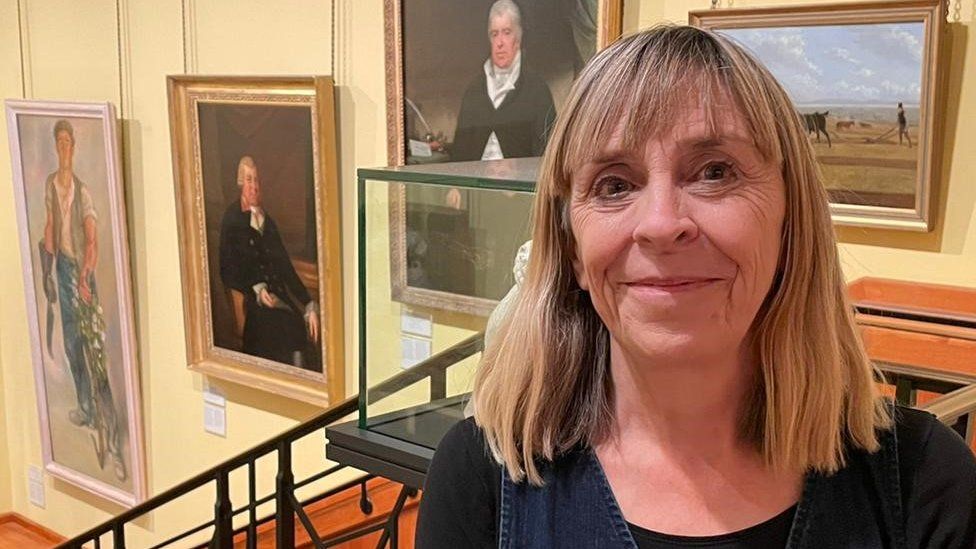A portrait of Welsh slave owner Sir Thomas Picton labelling him a hero has been removed by National Museum Wales.
Picton has been celebrated as a hero who died at the Battle of Waterloo.
But as governor of Trinidad he abused the slaves he owned, and was known as a tyrant even at the time.
The portrait at the Cardiff museum has been put in storage and two artists with Trinidadian roots have been commissioned to “re-frame” the legacy to give more context about his life.
Scrutiny of memorials to Picton has intensified since the growth of the Black Lives Matter movement in 2020, and Cardiff council voted to remove a marble statue of him from its Hall of Heroes at City Hall.
When complete, the commissions will become a part of Wales’ national collection.
National Museum Wales (NMW) hopes they new commissions will amplify the voices of those originally neglected in the telling of Picton’s story, or those whose lives are most affected by its legacy today.
‘It’s almost like a new era… looking at who he was, what he stood for, what he did’
The decision to remove the portrait – which has been on display for more than 100 years – was made as part of Reframing Picton, a youth-led initiative involving Amgueddfa Cymru and community partner the Sub Sahara Advisory Panel (SSAP).
SSAP director Fadhili Maghiya said the decision to take down the portrait was the start of something important.
“It’s almost like a new era in some ways, especially looking at who he was, what he stood for, what he did,” he said.
“It does bring a new chapter in terms of conversations about race, diversity, inclusiveness.”

NMW director of collections, Kath Davies, said it wanted the SSAP to decide on the future of its painting.
“We’ve always recognized that Picton’s history is difficult, it’s complex, it’s controversial and we wanted to work with the young people for them to decide how they wanted to reflect on that history and how they want to interpret that portrait,” she said.
“The work of the artists will go on display in August next year because it’s the Trinidadian day of independence… and we’ll be working on the interpretation of Picton with the young people over the next few weeks.”
Torture
The painting of Sir Thomas Picton which hanged in the National Museum in Cardiff was a gift from the Earl of Plymouth in 1907 but is much older, and is believed to have been hung in the Royal Academy in London in 1816.
Picton, who was born in Haverfordwest in 1758, had long been remembered as the highest ranking British officer to fall at the Battle of Waterloo in 1815.
But as governor of Trinidad in the 1790s and early 1800s, he authorised the use of torture on local people, including 14-year-old Luisa Calderon who was accused of stealing.
The incident led to him being ordered to return home to stand trial in London. He was convicted but later had the decision overturned.
Picton’s portrait has been replaced in the Faces of Wales Gallery with another portrait titled Hedger and Ditcher: Portrait of William Lloyd.
It was painted by Dutch artist Albert Houthuesen who was fascinated with the working life of the colliers in Trelogan, Flintshire, while on holiday in the area with his wife in the 1930s.



No comments:
Post a Comment
Note: only a member of this blog may post a comment.